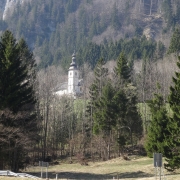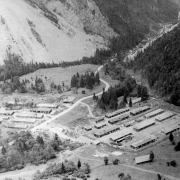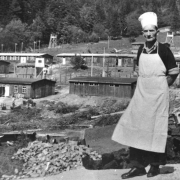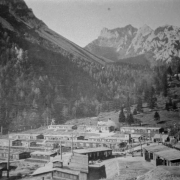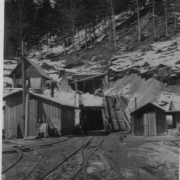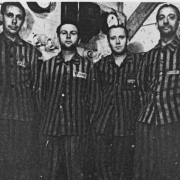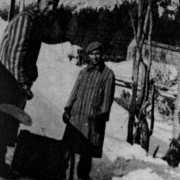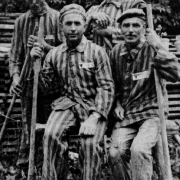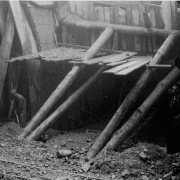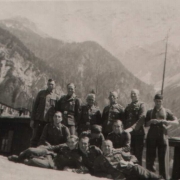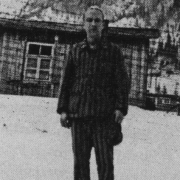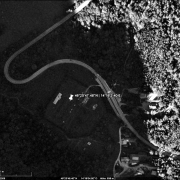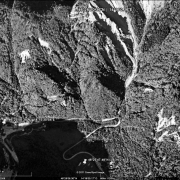Satellite Camp Loibl South
Gründung des Konzentrationslagers
Loiblpass Subcamp was established on 3 June 1943 and was located on the Southside of Loiblpass in what is Slovenia today. The “Universale Hoch- und Tiefbau AG”, who took over the construction project in 1943, aimed to build a road tunnel safe for winter use. For this purpose, the SS provided - for a fee - prisoners of concentration camps as labourers.
Lokalisierung
A barracks camp was erected on the Slovenian side of the Loiblpass, near the entrance to the tunnel. The digging of the tunnel was done from both north and south at the same time. For this reason, the camps for the prisoners, the SS, and the civilian workers were set up near the tunnel entries.
The prisoners who died in the camp were burnt on railway sleepers above a trench.
Informationen über die Häftlinge
The largest group of prisoners at the Loiblpass camps were from France. The second-largest group was likely around 500 prisoners from Poland. There were also approx. 150 Russian, and 124 Yugoslavian prisoners and several smaller groups from other countries at the camp. Many of the French prisoners were categorised as “political” prisoners; approx. 30 to 40 German and Austrian prisoners were classified as “criminals”. In total, approx. 1,650 people were detained at the Loibl North and South Subcamps. The total number of 1,8000 prisoners is due to another approx. 60 prisoners from the hostage prison in Begunje, but their names are not in the records. Moreover, another 80 prisoners were forced to walk towards Loibl from Klagenfurt-Lendorf Subcamp in May 1945. In August 1944, the highest number of prisoners present at once was reached, with approx. 1,300 persons. The exact number of prisoners in the South camp remains unknown. Aside from the prisoners, the construction of the tunnel was also supported by civilian workers (740), among them 47 from Austria and Germany, 596 from Slovenia, 75 from Croatia, and 22 from Italy. Many of the Slovenian and Croatian workers were conscripted, and there were connections to partisans.
Zwangsarbeit
Prisoners of both subcamps had to dig 1,542 metres of road tunnel along the mountain route of Loiblpass. The construction of the tunnel proceeded quickly from the beginning. On 4 December 1943, the tunnel breakthrough was celebrated by Gauleiter (District Leader) Friedrich Rainer from Carinthia. To accelerate the completion of the tunnel, it was decided to forego the “usual safety precautions". The next year, the first military truck passed through the provisional tunnel. In autumn 1944, efforts were made to cease construction of the tunnel, but the works were continued until early May 1945. One of the reasons for this was the significance of the provisional tunnel for the retreat of the German Wehrmacht from the Balkans. The strenuous labour and the insufficient food supply made living and working conditions very harsh for the prisoners of the Loiblpass subcamps. Approx. 40 prisoners lost their lives there. After 26 documented escape attempts 21 attempts ended up being successful thanks to the help of partisans and locals.
Bewachung
The guards of the Loiblpass subcamps were recruited from the 33rd SS/T.Sturmkompanie Mauthausen (100 men) as well as from the local police (125 men). First commander was Julius Ludolph, who was replaced by SS-Obersturmführer (Senior Assault Leader) Jakob Winkler in late July 1943, after the civilian construction engineers had complained about Ludolph. The senior staff of the state construction supervision and the “Universale Hoch- und Tiefbau AG” were all members of the NSDAP. There were several guard posts along the access roads towards Loiblpass, both on the Northern and on the Southern side. Sigbert Ramsauer was camp physician. He murdered sick prisoners with petrol injections. During the war crimes trials, Jakob Winkler was executed, and Sigbert Ramsauer was sentenced to life imprisonment, of which he spent six and a half years actually in prison.
Befreiung
The official work detachment was held until May 1945. On 15 April 1945, the prisoners of Loibl North Subcamp were moved to Loibl South Subcamp due to the persisting partisan activities. Loibl North Subcamp was closed. The prisoners of Loibl South Subcamp named 4 May 1945 as their “last day of work". Those prisoners who were still able to walk had to start walking west on 7 May 1945. On 8 May, the prisoners were freed by partisans shortly before arriving in Feistritz, and the SS elites defected from Loibl South Subcamp through the tunnel towards Klagenfurt in civilian clothes. Most of these “refugees” only made it to Draubrücke (the bridge crossing Drau river), where they were recognised by partisans or former prisoners and the handed over to the authorities to get arrested. Several SS members managed, however, to remain unrecognised among the general chaos going on, or to escape again right away. Only very few had to answer for their crimes before a court.
Gedenken und Erinnern
The Slovenian government has erected a memorial on the premises of the former civilian labour camp. In 1954, the premises of the subcamp were declared a monument and a memorial was erected with numerous information boards. Each year in June, a memorial celebration is held for Loibl North Subcamp on the Carinthian side, and one for the camp on the Slovenian side. The commemoration and liberation celebrations are organised by the Mauthausen Committee Carinthia/Koroška [1]. The relevant date can be found in the programme for commemoration and liberation ceremonies [2].

